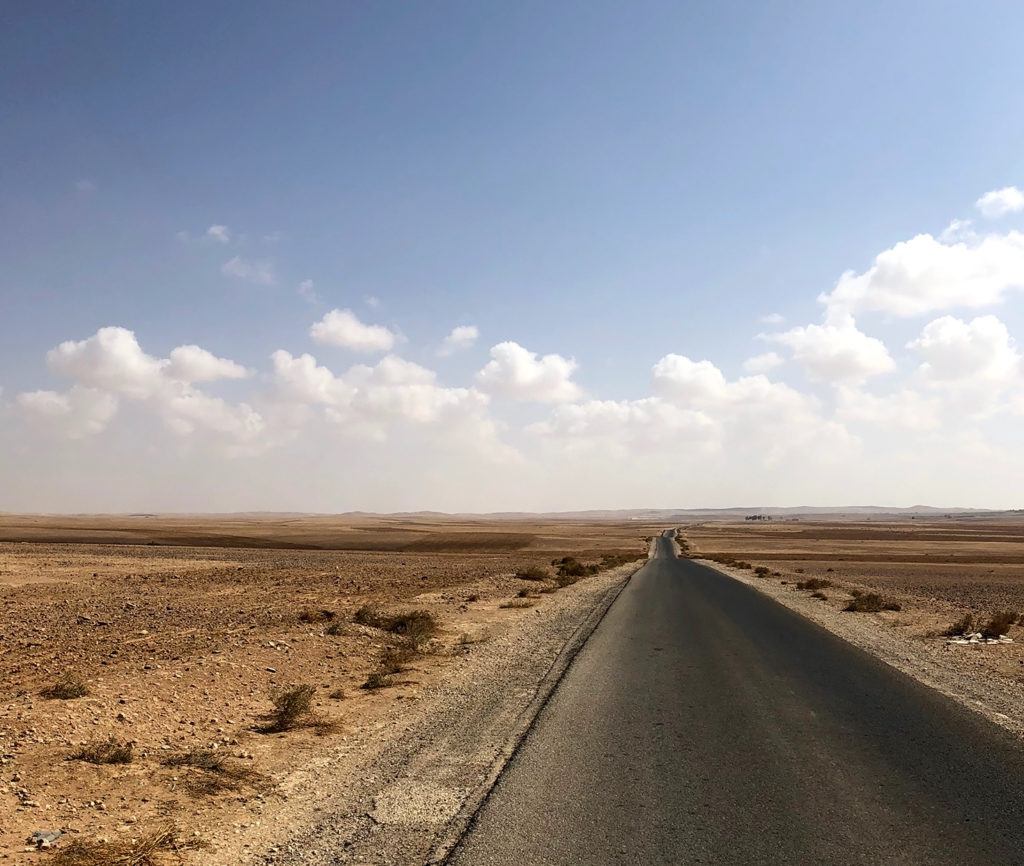This story was featured by NBC News
AMMAN, Jordan — For the past decade, Khawla Qisi has trapped herself at home on Fridays. It’s the only day of the week her apartment building receives water, and she has to make the most of it.
“I can’t do anything else but focus on the water,” she said.
Jordan has struggled with its water supply for decades. The arid nation receives roughly 20 days of rain per year and climate change is making conditions worse just as water demands from the growing population increase.
At the center of the government’s efforts to obtain more of this precious resource is a patch of desert swirling with dust devils about 32 miles south of Amman.
Seven new wells are scheduled to be built here to tap the Disi, a deep aquifer that contains so-called fossil water that accumulated 10,000 to 30,000 years ago. It’s the last source of fresh groundwater for the country, experts say.
“After this, we are out of chances,” said Marwan Al-Raggad, a hydrogeology professor at the University of Jordan.

Reaching it requires drilling about twice as deep as groundwater aquifers — which are typically 1,640 feet underground and refilled by rainwater.
“It means huge energy is needed to extract this water,” said Ali Subah, general secretary of Jordan’s water and irrigation ministry. “It will be expensive.”
The U.S. Agency for International Development is funding the project, which is currently in the planning stage. Construction is anticipated to begin next year. The wells will produce an estimated 5.3 billion gallons of water for the people of Amman. It will also provide data on the complex prehistoric underground water system that researchers are still working to understand.
The journey the fossil water will take from ground to tap in this region is unlike anywhere else in the world.
Specialized drills and equipment are required to access the water, Subah said. A treatment facility and complex series of pipelines and pumping stations are also required to elevate the water from at least 3,281 feet underground to Amman, which is 3,084 feet above sea level.
The Jordanian capital currently gets its water from a treatment plant that’s between the northern edge of the Dead Sea and the celebrated baptism site of Jesus on the Jordan River.
Before it makes the uphill climb to Amman, the brackish water, salty from the spring sources, must be cleaned and desalinated.
Then, it travels through six pumping stations and reservoirs connected by pipelines over a 25-mile stretch before being distributed across the city’s water network.
It’s a technically challenging and expensive system, with power accounting for 90 percent of its operating costs, according to Haitham Al-Kilani, the plant’s production director.
In an attempt to reduce expenses, the facility is launching a pilot project to install solar panels that will provide up to 5 percent of the energy required, Al-Kilani said.
While the plant’s rain-fed sources don’t appear to be at risk of running out, Al-Kilani said that the rainy season appears to be getting shorter and now starts in mid-November instead of September.
“It’s a big change,” he said, “The amount of rain, it’s declined in the last 10 years. This is climate change, it is fact.”
The treatment plant can’t keep up with the capital’s growing demand for water, officials said.
An influx of at least 670,000 Syrian refugees, population growth and aging infrastructure have all placed pressure on the system.
For residents of Amman like Qisi, the effects are hitting their wallets. Since the war in Syria broke out seven years ago, she said her water bill shot up, now costing three to four times more than in the past.
Every unit in her building has a tank on the roof that is filled up on water day to sustain them through the week — typical for homes across Jordan. As long as Qisi manages household use through the week, taps typically don’t run dry.
But it’s not a fool proof system and there’s the challenge of visitors.
“If my family is visiting — say you have guests, an event — you can’t tell them they can’t clean themselves, don’t use water,” she said. “So in these situations, you’re not focused on saving water and the water runs out.”
The University of Jordan’s Al-Raggad said most sources of groundwater in the country have already been “exploited.”
Deep aquifers like the Disi can help fill the gap, but they are a finite resource, Al-Raggad explained.
The Disi is vast, extending from Jordan through Saudi Arabia. Wells near the border, where the water is not as deep, have depleted it since the 1980s, reducing its expected lifespan from 100 years to about 50.
Longer term, the country is also exploring major desalination projects. Jordan’s short southern coastline sits on the Red Sea, but unlike neighboring Saudi Arabia and Israel, which have heavily invested in the technology over many years, Jordan only opened its first facility in 2017.
Desalination is costly both in terms of initial infrastructure and persisting energy costs.
But Al-Raggad believes it offers “the only chance for the future.”
For now, everyone must make do with what they have. Qisi said she captures the water used in the kitchen for washing vegetables to feed her garden.
In a crisis, neighbors will also help each other out if someone’s supply falls short before water day.
“We’ve all got the same problems,” she said.
